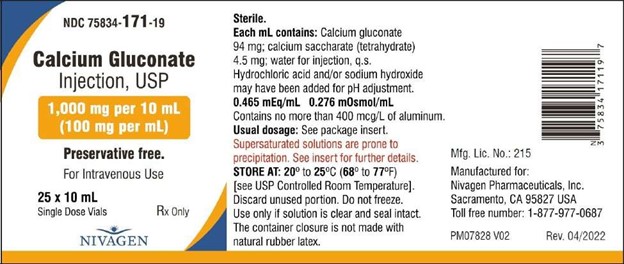A nurse recently administered filgrastim intravenously to a client who has cancer and is receiving cytotoxic chemotherapy.
For which of the following data, discovered after the medication was administered, should the nurse file an incident report?
The client had chemotherapy 12 hr before the medication was administered.
The medication vial sat at room temperature for 2 hr before it was administered.
The client's absolute neutrophil count was 2,500/mm³ before the medication was administered.
The nurse flushed the client's IV line with dextrose 5% in water before and after the medication was administered.
The Correct Answer is A
Choice A rationale: Administering filgrastim after chemotherapy is a standard practice to boost white blood cell count. However, filgrastim should not be given within 24 hours before or after chemotherapy, as it can affect the efficacy and increase the risk of side effects. Administering the medication 12 hours after chemotherapy falls within this contraindicated window, necessitating an incident report.
Choice B rationale: Filgrastim can be stored at room temperature for short periods, and 2 hours is generally within acceptable limits for stability.
Choice C rationale: An absolute neutrophil count of 2,500/mm³ is within the normal range, and there is no contraindication for administering filgrastim.
Choice D rationale: Flushing the client's IV line with dextrose 5% in water before and after administering filgrastim is not appropriate, as this medication is typically administered with saline solution. Using an incorrect flushing solution could affect the medication's efficacy or compatibility, necessitating an incident report.
Nursing Test Bank
Naxlex Comprehensive Predictor Exams
Related Questions
Correct Answer is B
Explanation
An HbA1c value of 6.8% indicates that the client is adhering to the treatment plan [B].
HbA1c is a measure of long-term blood glucose control and is used to monitor the effectiveness of diabetes treatment.
An HbA1c value of less than 7% is generally considered a good target for people with diabetes.
Choice A is wrong because positive urinary ketones can indicate poor diabetes control [A].
Choice C is wrong because a total cholesterol level of 225 mg/dL is considered high and does not indicate adherence to the treatment plan [C].
Choice D is wrong because a creatinine level of.0 mg/dL is within the normal range but does not specifically indicate adherence to glipizide therapy [D].
Correct Answer is D
Explanation
An intravenous (IV) calcium supply can help calm some symptoms of hypermagnesemia.

Calcium helps normalize your heartbeat and breathing.
Choice A is wrong because Protamine sulfate, is not used to treat hypermagnesemia.
Choice B is wrong because Flumazenil, is not used to treat hypermagnesemia.
Choice C is wrong because Acetylcysteine, is not used to treat hypermagnesemia.
Whether you are a student looking to ace your exams or a practicing nurse seeking to enhance your expertise , our nursing education contents will empower you with the confidence and competence to make a difference in the lives of patients and become a respected leader in the healthcare field.
Visit Naxlex, invest in your future and unlock endless possibilities with our unparalleled nursing education contents today
Report Wrong Answer on the Current Question
Do you disagree with the answer? If yes, what is your expected answer? Explain.
Kindly be descriptive with the issue you are facing.
